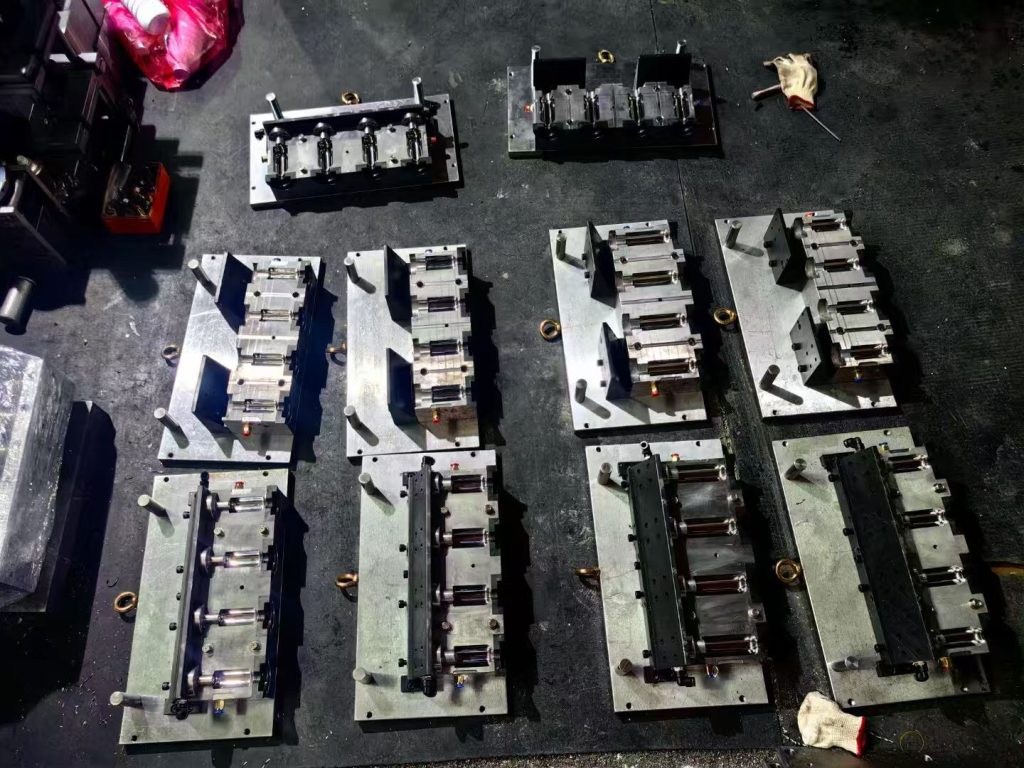Injection molding is a cornerstone of modern manufacturing, enabling the production of complex plastic parts with high precision and efficiency. However, the success of your injection molding project largely depends on selecting the right mold. With various mold types, materials, and classifications available, making the right choice can feel overwhelming.

This guide breaks down everything you need to know to select the perfect injection molding mold tailored to your project’s needs.
1. Understand Your Production Volume and Mold Life Expectancy
One of the first considerations when choosing a mold is how many parts you plan to produce. Molds are classified by their expected lifespan and production capacity:
- Prototype Molds (Class 105): Designed for very low volumes (100-500 parts). Typically made from aluminum, these molds are cost-effective but have a limited lifespan and are ideal for early-stage prototyping.
- Low to Medium Volume Molds (Class 103 & 104): Aluminum or softer steel molds that can produce up to 10,000 parts. Suitable for startups or products still in market testing phases.
- High-Volume Production Molds (Class 101 & 102): Made from hardened steel, these molds are built to last for hundreds of thousands to over a million cycles. They have higher upfront costs but deliver durability and consistent quality for large-scale manufacturing.
2. Choose the Right Mold Type for Your Part Design
Injection molds come in various configurations, each suited to different production needs and part complexities:
- Two-Plate Molds: The simplest and most common type, consisting of a cavity and core plate. Ideal for straightforward parts but may have limitations with complex geometries.
- Three-Plate Molds: Include an additional plate to separate runners from parts, improving part ejection and reducing waste. Suitable for more intricate parts or when the gating location is critical.
- Stacked Plate Molds: Feature multiple levels of cavities, effectively doubling output without increasing machine footprint. Best for very high-volume production but requires precise engineering.
3. Consider Cavity Design: Single, Multi, or Family Molds
The number and arrangement of cavities in a mold affect production speed and cost:
- Single-Cavity Molds: Produce one part per cycle, offering high precision and quality. Ideal for low-volume or highly detailed parts.
- Multi-Cavity Molds: Contain multiple identical cavities, increasing output and lowering cost per part for medium to high volumes.
- Family Molds: Produce different parts in one cycle, useful for multi-component assemblies but more complex to design and balance.
4. Select Mold Materials Based on Durability and Cost
Material choice impacts mold durability, cost, and suitability for different plastics:
- Aluminum: Lightweight and inexpensive, aluminum molds are great for prototyping and short production runs but wear out faster.
- P20 Steel: Common for medium-run molds, offering a balance between cost and durability.
- Hardened Steel: Used for high-volume production molds requiring excellent wear resistance and tight tolerances.
5. Factor in Mold Features and Design Considerations
Several design elements influence mold performance and part quality:
- Cooling Channels: Efficient cooling reduces cycle time and improves part consistency.
- Ejection System: Proper ejection mechanisms prevent part damage and ensure smooth production.
- Draft Angles: Adding draft (typically 1-2 degrees) helps parts release easily from the mold, reducing defects.
- Wall Thickness: Uniform wall thickness prevents warping and sink marks, enhancing part strength and appearance.
6. Align Mold Selection with Your Material Choice
The type of plastic resin used affects mold design and material selection. For example, engineering resins like ABS, Nylon, or Polycarbonate may require molds with higher durability and precise tolerances, while commodity plastics like polypropylene might allow for simpler mold designs.
7. Evaluate Costs and Lead Times
Prototype molds are faster and cheaper to produce but less durable, making them ideal for testing and validation. High-quality steel molds require longer lead times and higher investment but pay off in long-term production efficiency and part quality.
Conclusion
Choosing the right injection molding mold is a strategic decision that impacts your product’s quality, production efficiency, and overall cost. You can select a mold that perfectly aligns with your project goals by carefully considering your production volume, part complexity, mold type, materials, and design features.
Partnering with an experienced mold manufacturer who understands these factors will help you navigate the complexities and ensure a successful injection molding project.
Ready to get started? Contact your mold manufacturing partner today to discuss your project requirements and find the ideal mold solution.
